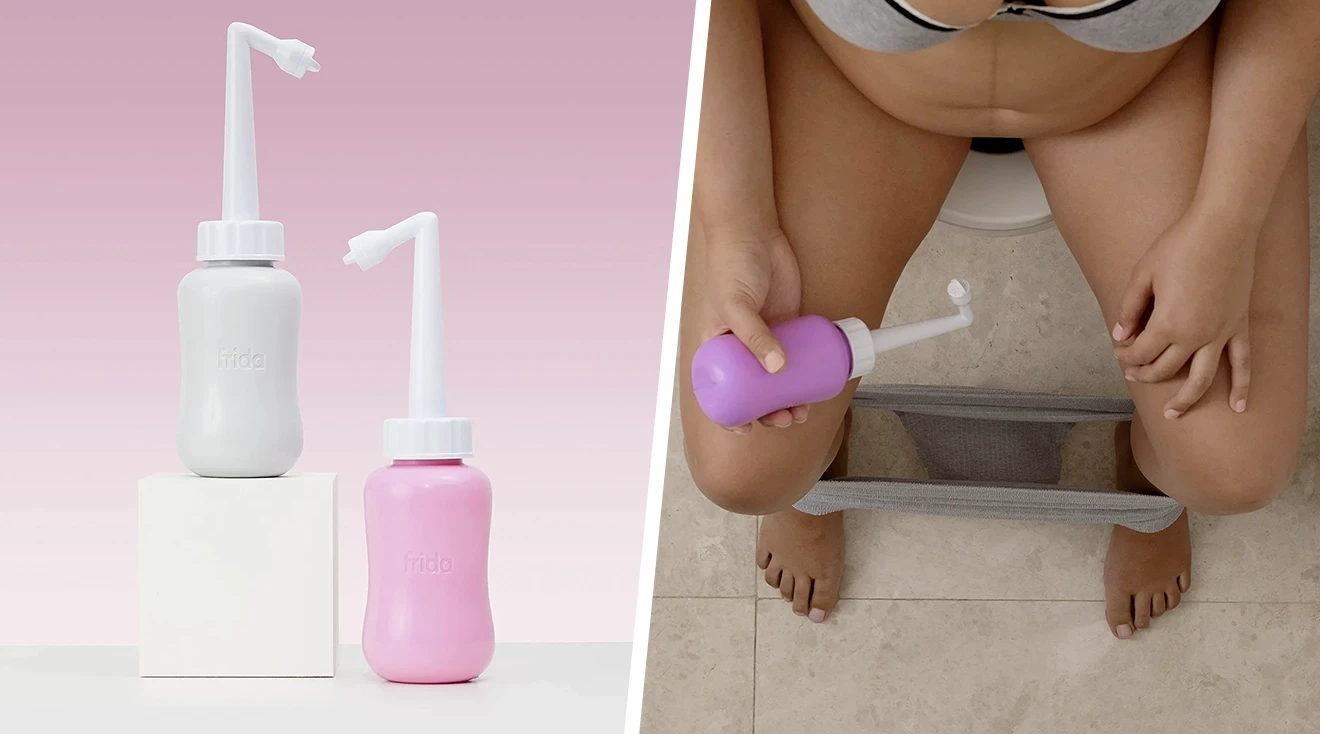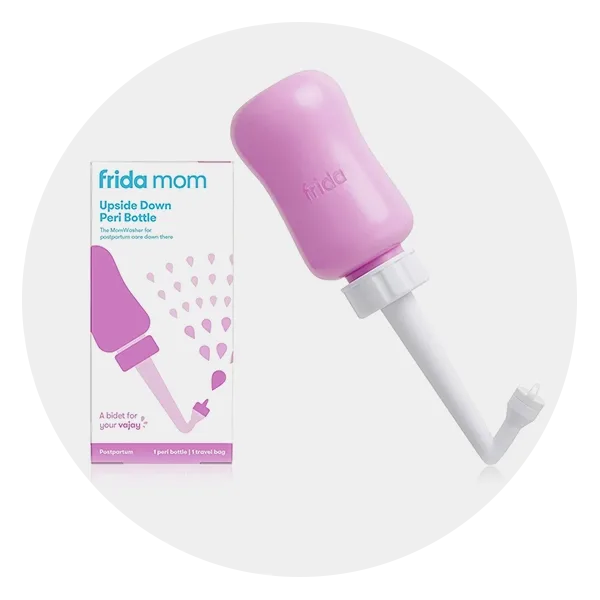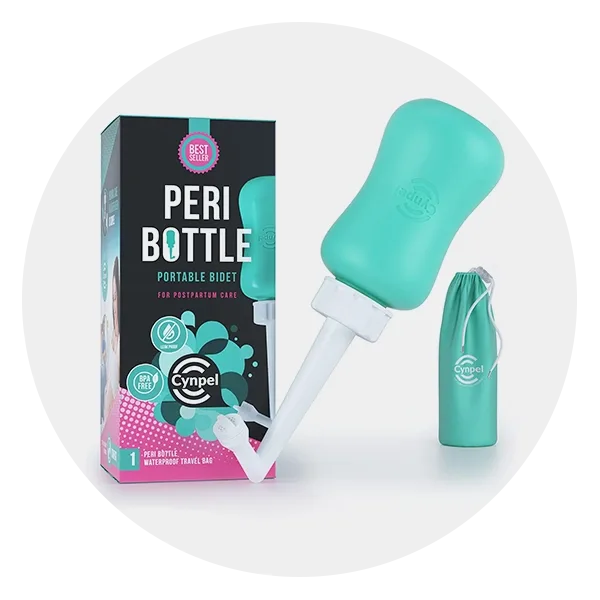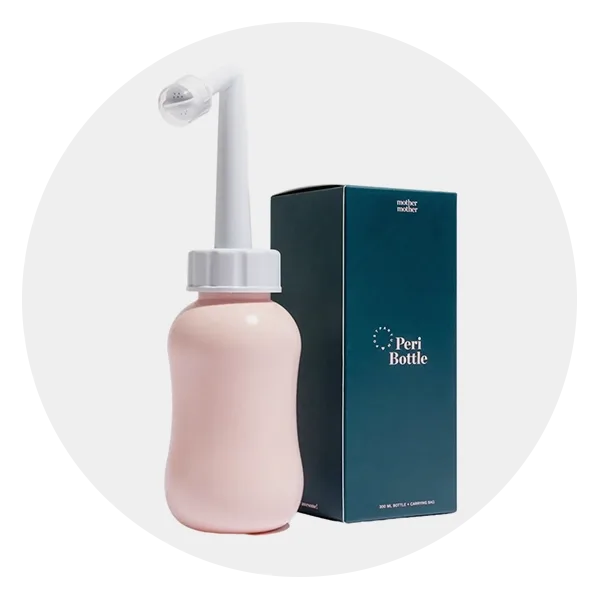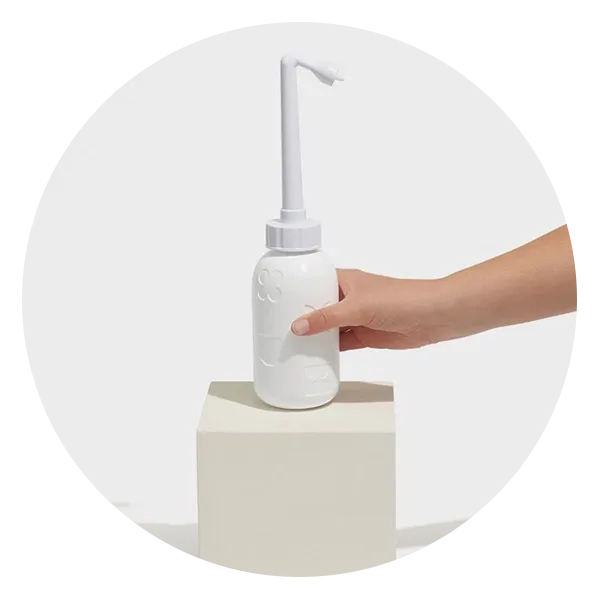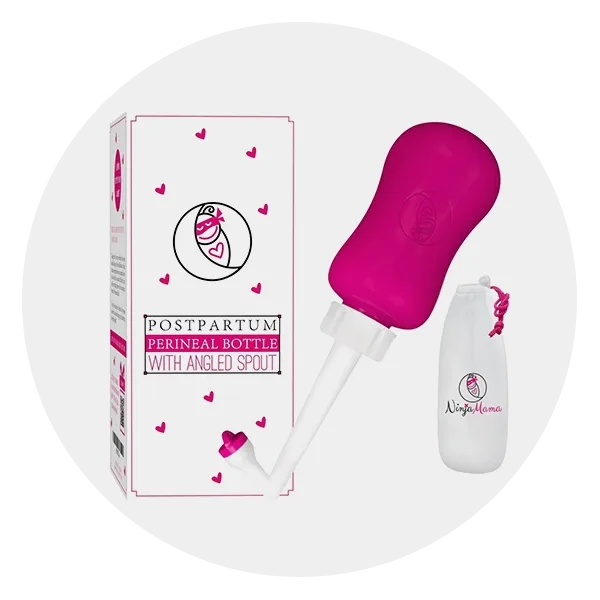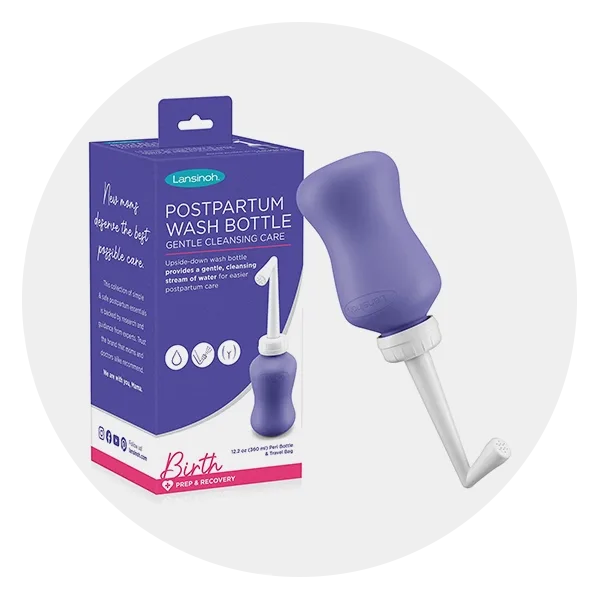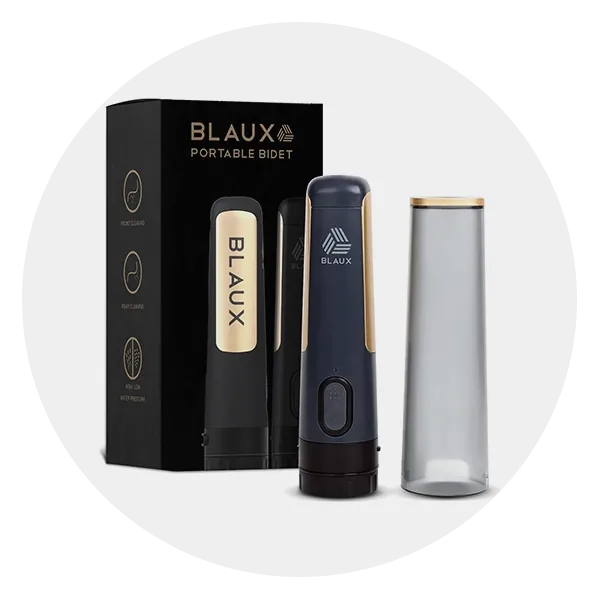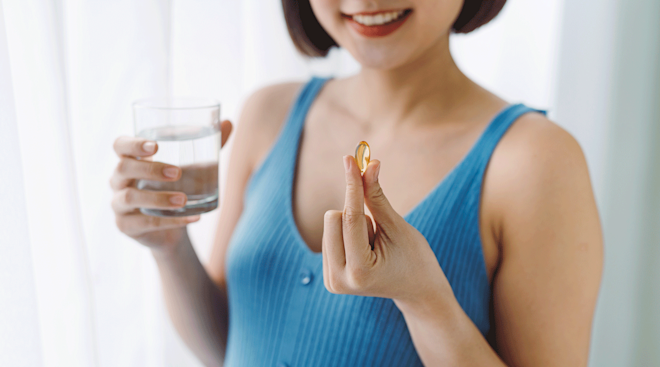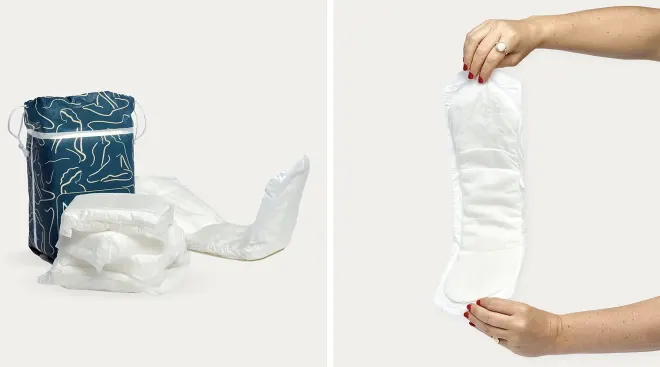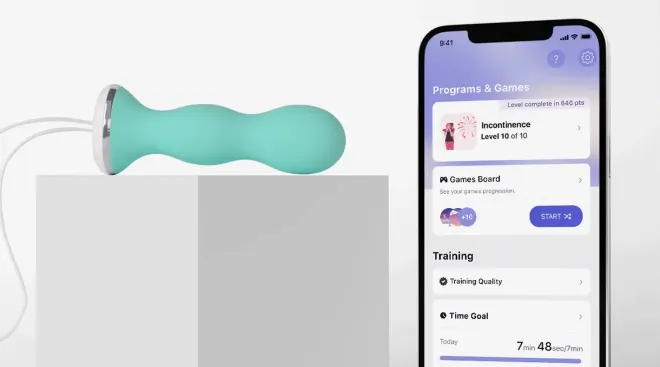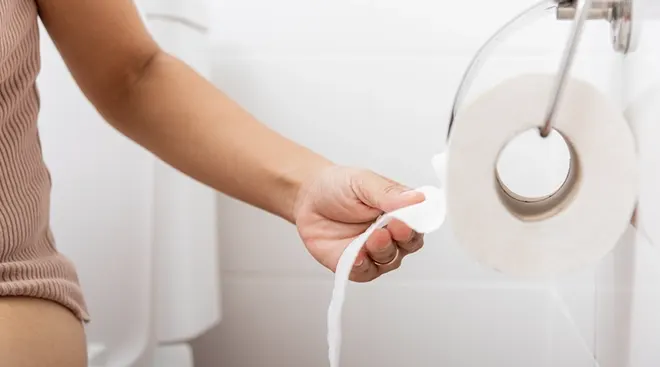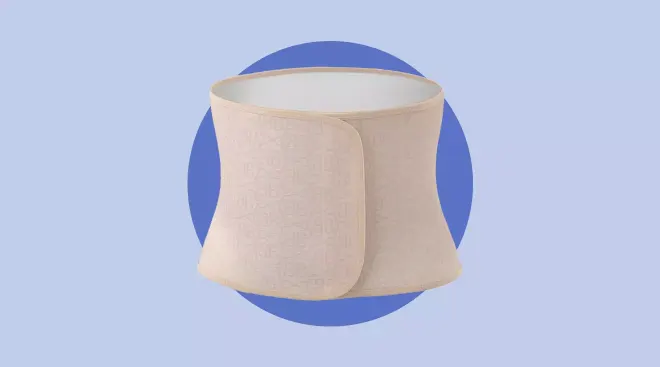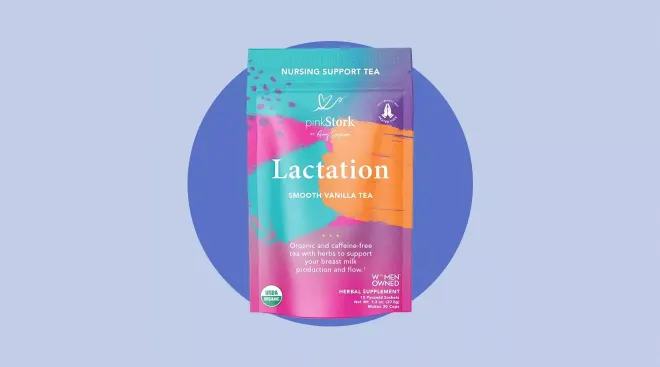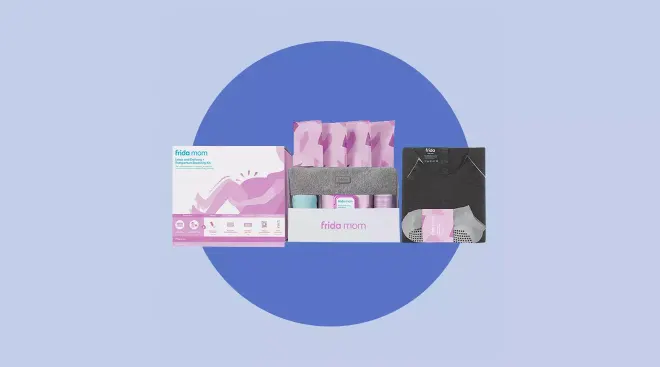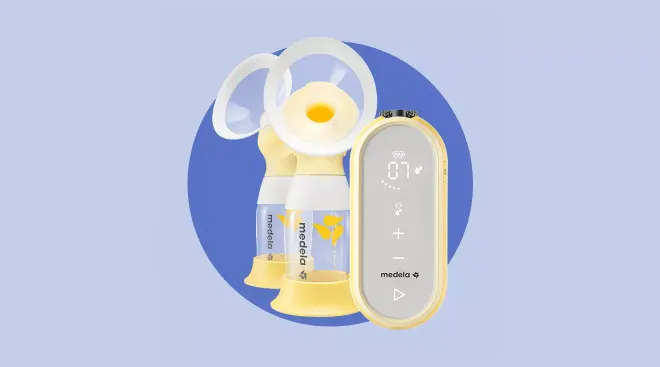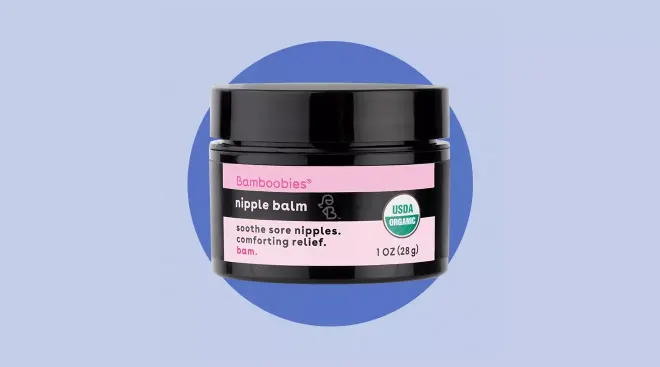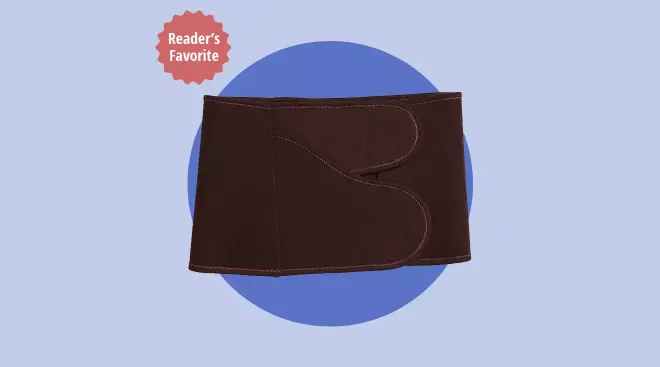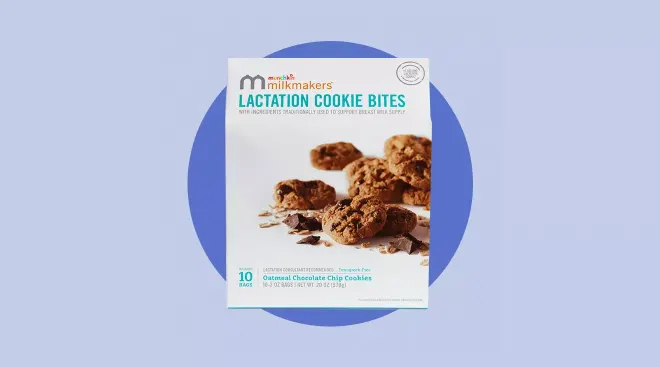How to Use a Peri Bottle to Ease Your Postpartum Recovery
Baby has finally arrived—welcome to the fourth trimester! As you probably already know, there’s a lot going on during this tumultuous postpartum period. While much of it is super-sweet (think: newborn cuddles), other parts can be uncomfortable and messy—and this is totally natural. As you stock up on post-birth essentials (and plenty of comfy underwear), you’re going to want to add a peri bottle to your list. Designed with new moms in mind, a peri bottle can help with recovery, as your perineum (aka the area between your vagina and anus) heals from giving birth. Whether you deliver baby vaginally or via c-section, it’s normal to experience bleeding and swelling, which is where a peri bottle comes in handy. Read on to learn more about how to use a peri bottle and its soothing benefits, plus browse our favorite picks to buy right now.
First things first, what is a peri bottle? Don’t let its simple appearance fool you—a peri bottle is a small but mighty tool that can help make the postpartum recovery process much more comfortable. A hospital peri bottle is a simple fillable and squeezable tube, whereas an upside-down peri bottle has an angled spout. Either way, it’s designed to keep your perineum clean after giving birth by gently streaming water at the perineal region during urination and/or after using the bathroom. It helps soothe soreness, aid the healing process and prevent infection from occurring in this super-sensitive area.
“I think peri-bottles are almost a standard of care now. Any new mom can use a peri-bottle,” says Heather Bartos, MD, an ob-gyn and the medical director of Be. Women’s Health and Wellness in Frisco, Texas. If you didn’t experience tearing during childbirth, a peri bottle can still offer benefits, adds Gil Weiss, MD, an ob-gyn based in Chicago. Even if you have a c-section, you may want one too to help with potential perineal swelling and vaginal bleeding.
How exactly does a peri bottle ease postpartum recovery? Post-birth, you’ll experience bleeding and swelling as a result of the delivery process. For these reasons, Rachel Nicks a New York City-based doula, suggests that new moms avoid wiping with toilet paper after using the bathroom during the initial postpartum period. Instead, she recommends filling a peri bottle with warm water (not too hot, not too cold) to help keep clean in the first few weeks after birth, or until you feel comfortable to wipe again.
Weiss explains that “most deliveries result in mild to moderate perineal tearing,” and that, on occasion, more severe tearing happens. In these instances, a peri bottle can help reduce the irritation and stinging sensation people often experience post-delivery when going to the bathroom. “After delivering a baby, you can’t see down there, and a variety of skid marks, tears and abrasions can make peeing a real burn (literally),” adds Bartos. Additionally, a peri bottle can provide relief from postpartum hemorrhoids.
At this point, you may be wondering: How do I use a peri bottle? Don’t worry—we’ve got you covered. Many peri bottles have an upside-down design with an angled nozzle to make targeted relief a breeze while sitting on the toilet. Bartos explains that you’ll probably have to spread your legs a little to get the right angle. Once you’ve found the perfect spot, let your urine stream start and squirt the peri bottle with one hand—or, squeeze it when you’re finished going to clean the targeted area. “It may take a hot second to get the coordination right, but when it’s good, it’s awesome,” she says. Once you’re done, Weiss recommends patting the skin dry, rather than wiping the way you’re probably used to.
Alternatively, new moms can use portable, electric bidets in lieu of upside-down peri bottles. Just keep in mind that the force of the water coming out of a bidet may be uncomfortable in the initial days after delivery, warns Weiss. It’s also worth noting that portable bidets are more expensive than peri bottles, so it might not be worth the extra expense, if you don’t plan on using the device beyond the postpartum period.
If you give birth in a hospital, you’ll most likely receive a peri bottle—but they’re often no match for other top-notch options on the market. When shopping for a peri bottle, Bartos advises moms-to-be and new moms to look for these features:
- Washable: Due to the nature of a peri bottle, make sure it’s simple to clean—that way it can do its job of keeping you clean. Since most aren’t dishwasher-safe, check that your pick is easy to hand wash with hot, soapy water.
- Easily removable top: To streamline the process, Bartos suggests choosing a peri bottle with a top that’s simple to remove. This way, you can refill the reservoir and get targeted relief in a pinch.
- Compact size: Bartos recommends that your peri bottle shouldn’t be too big, as you’ll be using one hand to squeeze it while on the toilet. Plus, a smaller design means it will be more portable and discreet if you’re taking it on the go.
- An upside-down design: A hospital peri bottle gets the job done, but isn’t the most efficient. An upside-down peri bottle, on the other hand, offers more targeted precision.
Now that you know exactly what a peri bottle is and how to use it, you’re ready to find the best one for your needs. Whether you’re in the market for a standard upside-down peri bottle or an electric, portable bidet, check out our favorites below.
Frida Mom Upside Down Peri Bottle
- Ergonomic design for targeted relief
- Comes with a convenient carrying pouch
- Not dishwasher-safe
- Doesn’t hold as much water as other options
First on our list is this peri bottle from Frida Mom. Its upside-down, ergonomic design makes it simple to use while on the toilet at the hospital or back at home. Better yet, you can count on this peri bottle’s narrow, angled neck to provide a gentle stream of relief just where you need it. This portable device even comes with a waterproof pouch that can easily be toted in your diaper bag.
Cynpel Peri Bottle for Postpartum Essentials
- Retractable nozzle with 10-hole spout
- Comes with a travel bag
- Holds up to 12 oz. of water
- Some reviewers reported that the device is difficult to clean
This upside-down peri bottle has thousands of five-star reviews—and we can see why. It holds up to 12 oz. of water, so it isn’t too big, but still means you won’t have to refill it often. This peri bottle’s angled nozzle features a 10-hole spout to create a water stream that’s more efficient and more soothing. Best of all? The retractable nozzle can be pushed down into the reservoir, resulting in a compact, more portable design.
Mother Mother Postpartum Peri Bottle
- Features a nozzle cap
- BPA-free
- Dispenser doesn’t retract
Next up, we have this pretty pink peri bottle from Mother Mother. The portable design makes it perfect for new moms who are out and about—or who are carrying it from one part of their home to the other. This upgrade from a standard hospital peri bottle features an ergonomic, angled dispenser for your convenience. Simply fill it with warm water or brewed sitz bath herbs and you’re ready to go!
Bodily Care Peri Wash Bottle
- Retractable nozzle
- Modern aesthetic
- Hand wash only
For consistent relief during postpartum bathroom visits, opt for this peri bottle from Bodily. It’s equipped with an upside-down, angled spout to provide relief exactly where you need it. Pro tip: Bodily recommends saving your peri bottle to use as a baby bidet whenever your little one experiences diaper rash.
Ninja Mama Peri Bottle for Postpartum Care
- Retractable nozzle
- Comes with a carrying pouch
- Some reviewers say it can leak at times
In the days after childbirth, keep this peri bottle close by to deliver a bit of TLC to your sensitive perineal area. Just fill it with warm water, lock the spout into place, then point and squeeze for targeted relief. When not in use, the nozzle retracts making it simple to store or travel with.
Lansinoh Upside Down Peri Bottle
- Holds up to 12.2 oz. of water
- Slightly textured bottle makes it easier to grip
- Some reviewers mention that it can leak
Last in our roundup of the best peri bottles for postpartum recovery is this pick from Lansinoh. Its angled spout will help you cleanse hard-to-reach areas in no time—and the slightly textured reservoir makes this peri bottle easier to grip and hold. Best of all? This upside-down peri bottle offers an ultra-gentle water stream to provide comfort and ease the healing process.
BLAUX Electric Portable Bidet
- Adjustable, rotating nozzle
- Rechargeable
- Water stream is more powerful than a typical peri bottle
- High price point
Instead of a typical peri bottle, you could opt for a portable bidet to get the job done. This rechargeable device offers up to 100 uses on a single, two-hour charge—plus, no squeezing necessary! Better yet, the nozzle can rotate 180 degrees to deliver a jet of fresh water wherever you may need it for a more complete clean. However, keep in mind that this may not be suitable in the first few days after childbirth, as the water stream is more powerful than that of a standard peri bottle.
About the experts:
Gil Weiss, MD, is an ob-gyn who serves women throughout The Loop in Chicago and Northbrook, Illinois. He’s a graduate of the University of Toronto in Canada, and attended medical school at the Technion-Israel Institute of Technology in Haifa, Israel. He completed his residency at the University of Illinois at Chicago.
Heather Bartos, MD, is an ob-gyn and the medical director of Be. Women’s Health and Wellness in Frisco, Texas. She is also the founder of The ME Spot, an online hub that aims to provide people with information on all things sex, self-care and health.
Rachel Nicks is a New York City-based doula and fitness instructor. She is also the founder of the non-profit organization Birth Queen, which focuses on tackling the Black maternal health crisis by supporting Black mothers and Black birth workers.
Please note: The Bump and the materials and information it contains are not intended to, and do not constitute, medical or other health advice or diagnosis and should not be used as such. You should always consult with a qualified physician or health professional about your specific circumstances.
Plus, more from The Bump:
Navigate forward to interact with the calendar and select a date. Press the question mark key to get the keyboard shortcuts for changing dates.

































